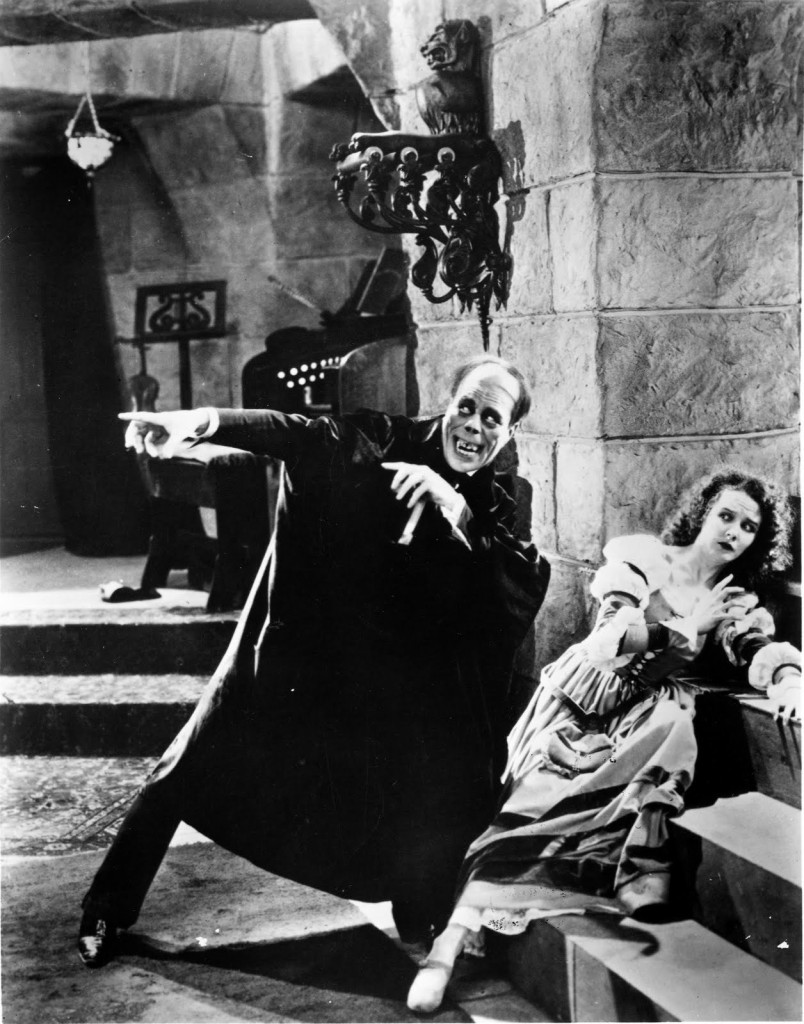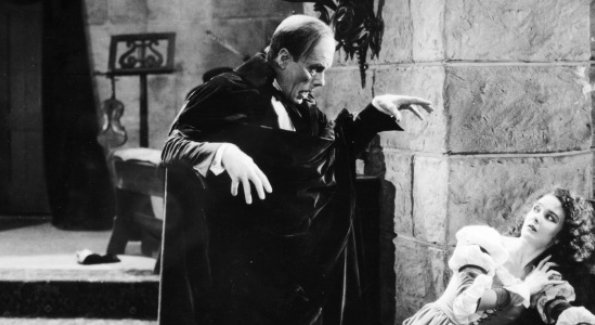
Lon Chaney as Erik, the Phantom and Mary Philbin as Christine Daae
Despite what some people think, the 1925 version of The Phantom of the Opera is not the first film version. There was an earlier one that now lost. This version was also reissused in 1929.
Of all the movie versions of Phantom this one is the most culturally ingrained and till Webber’s musical is one of the more seminal versions of Leroux book. It was a landmark film not only for the Universal Monster genre but sets and make-up. Like in The Hunchback of Notre Dame two years earlier, Lon Chaney did his own make-up and it was a real set-up from Quasimodo. People were terrified of Chaney’s Erik. But also the look and mood of the movie is great.
As far as the movie goes as adaptation of the novel it follows short, especially of how it COULD have been. Number one, the characters are all pretty darn simplistic. Erik just comes off as crazy; albeit with dramatic crazy in love but it doesn’t go as deep as in the book. He doesn’t even get the redemption that makes him a bittersweet figure.
Raoul is also different. He is not the whining stalker he is in the novel but more dashing and the typical lead of the time. He is also played by Norman Kerry who played Phoebus in the 1923 version. Mary Philbin’s Christine is one point but again she not a wish-washy as she is the book.
For the most part, scene per scene, beat by beat the movie plays out close to the book while streamline things that is TILL the ending. In this movie Christine agrees to marry Erik and instead of him dying a alone of a broken-hearted, he grabs Christine and is chased and killed by a mob. Which is ridiculous. Chaney didn’t care for this ending but it tested better with audiences. The original ending that was shot, is more faithful, with Erik’s redemption of letting Christine go and dying at his organ. They also shot the scene where Erik plays the violin at the graveyard. So the movie could have been more like the book. Though the chase does go by Notre Dame.
All in all, the 1925 isn’t a bad movie and is a fairly good version of book. But I would say watch it more for this movie’s importance and not for the story and the characters.
Follow thehunchblog



